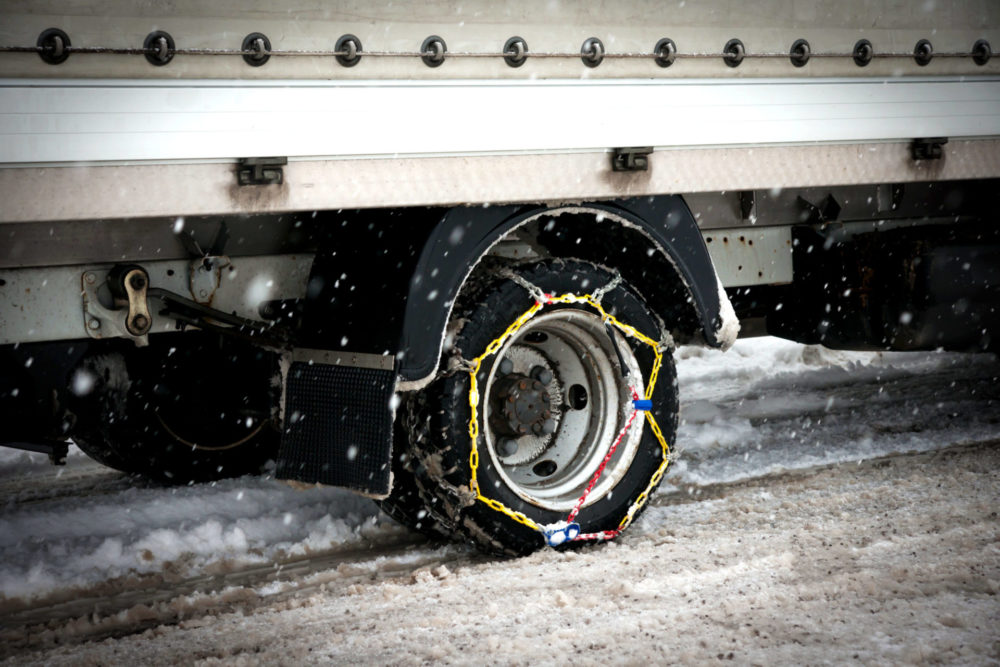The state of Oregon recently increased their fines for truckers who violate the Chain Law during the snow season. This rule went into effect September 25, 2021, and truckers who violate the law will have to pay $880. In this article we will discuss who will be exempted and why the fines have increased.
Why the Increased Fines for Chain Law Violations?
According to the Oregon Department of Transportation (ODOT), the delays caused by trucks failing to follow the state’s Chain Law cost the department approximately $8 million. Therefore, they’re increasing the fine to encourage truck drivers to carry chains at all times and use them on roads where they’re required.
What’s the Oregon Chain Law?
Oregon Chain Law requires drivers to carry tire chains and use them during winter conditions. For drivers’ convenience, the state places signs indicating where you need to use chains or traction tires while driving on a specific road.
While chains are good enough for most conditions, you should use traction tires instead when your vehicle’ gross weight is 10,000 pounds or less.
Using studded tires is also legal in Oregon from November 1 to March 31. However, these tires can cause damage to the road, so ODOT recommends motorists use them only when necessary.
Conditional Closure
Apart from enforcing the fines for chain law violations in Oregon, ODOT may also impose conditional road closures. This may be because of dangerous driving conditions on a specific road due to snow and ice.
However, in snowy conditions, the closure may be a last resort and used only when chains and tractions are insufficient.
What Qualifies as Chain and Traction Tires?
A chain can be a cable chain, link chain, or any other device that can attach to your vehicle, wheel, or the outside of the tire. This increases tire traction with the road in icy and snowy conditions.
A traction tire can be a retractable studded tire, studded tire, or any other tire designed to combat severe snowy conditions. However, if you use studded tires, the stud’s extension must be at least 0.04 inches and must not exceed 0.06 inches beyond the tire’s tread surface.
Are There Any Exemptions?
The following vehicles have an exemption from the Oregon Chain Law.
- Fire and police vehicles, ambulances, and ODOT highway maintenance vehicles
- An all-wheel or four-wheel drive vehicle in the following cases:
- Unloaded weight up to 6,500 or less
- Driven with both front and rear wheels powered
- The vehicle is carrying chains
- It has traction tires on all four wheels or has all-weather radial tires or mud and snow tires
- When it’s not towing another trailer or vehicle
- It’s not on the road with conditions that can cause the wheels to lose traction
- Utility vehicles for water, heat, and power companies
- A bus with 10,000 GVW or over
- Motorcyclists don’t have to carry chains because they cannot ride on the roads that require tractions or chains
Sources
https://www.oregon.gov/odot/Pages/index.aspx/
Oregon increases fine to nearly $900 for trucker chain law violations
https://www.tripcheck.com/Pages/Minimum-Chain-Requirements


